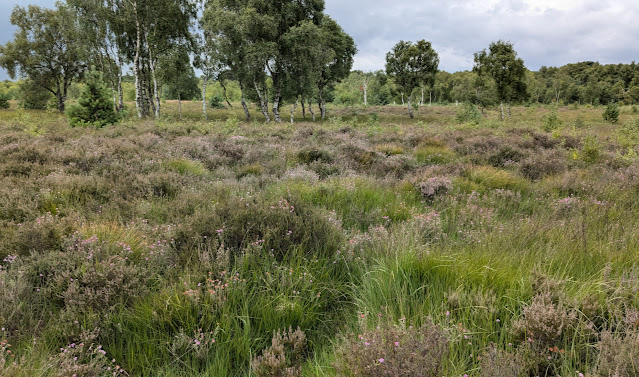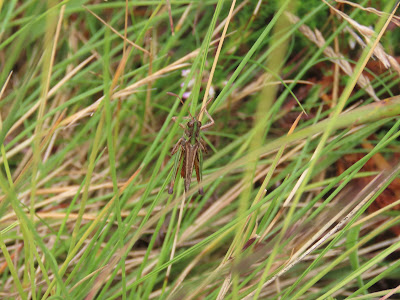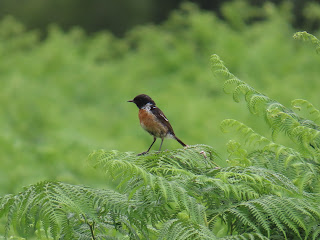For today's recce we stray just across the Yorkshire border into North Lincolnshire, to visit Crowle Moor. This reserve is a section of the largest lowland raised bog in England, the Humberhead Peatlands National Nature Reserve. The NNR is composed of Thorne, Hatfield, Goole and Crowle Moors, what remains of an extensive, raised bog, a thick and growing dome of peat. Manual extraction of peat for domestic use in the XIX century was at low scale and superficial allowed for the quick recovery of the Sphagnum mosses, but drainage, commercial extraction of peat and land reclamation or 'warping' degraded the peat bog. After decades of local opposition to the destruction of the bog, environmental activism and the documentation of the presence of over 4,000 species of insects in the site, commercial peat extraction stopped in sections until finally stopped completely in 2001. By that time, and despite its degraded status, it was clear that the Humberhead Peatlands held a lot of biodiversity and it was declared a National Nature reserve, SSSI and SCA. Crowle Moor is located on the south eastern side of the area and managed by the Lincolnshire Wildlife trust and North Lincolnshire Council. Currently drainage is carefully managed in 'cells' to keep the water table raised so that the peat bog can recover. It is fiendishly complex work as the drainage network is extensive and the extraction of peat means that surface levels differ across the site.
It was mostly overcast, but warm, again, we were spared most of the biting insects! After meeting our hosts for the day, aka bogtrotter and Ted, local naturalists that know the moor inside out, we start walking along the track towards an area of wet heath where Bog Bush-crickets have been seen.
Stepping just out of the track was quite treacherous, with very boggy and uneven terrain. Hopefully, the acoustic device will allow us to record bush-crickets across a wide transect following the track itself.
We found several more Bog Bush-crickets near this single track, and Sarah could even hear them calling, what a superpower! We noticed Bog Bush-crickets were with one exception present on Purple Moorgrass, away from Cross-leaved Heath, which was quite different from our previous trips.
The competition
Soon we found out that Roesel's have also colonised Crowle, and found this calling male (above) not very far from where we spotted the Bog Bush-crickets. Roesel's are undergoing a dramatic range expansion across the UK. Both species might compete where they meet and there is research in southern Sweden showing that Roesel's might outcompete Bog Bush-crickets, with Bog bush-crickets declining in areas where Roesel's were experimentally introduced. We will follow this up with acoustic surveys to assess the extent to which Roesel's are expanding into wet heathland.
After lunch in the car park, including a delicious slice of fruit cake baked by bogtrotter, we moved to the southern side of the reserve. There, after walking all round we found no signs of Bog bush-crickets, but Roesel's were all along the main path along a ditch and also at the entrance of the south end. The habitat was spot on, with even the delightful Bog Rosemary present along with cross-leaved heath and purple moorgrass. It was late afternoon and overcast, so conditions might not have been ideal for them.
Berggren, A., and M. Low. 2004. Exclusion of the native bog bush-cricket Metrioptera brachyptera by the currently invading Roesel’s bush-cricket Metrioptera roeseli." Entomologisk Tidskrift 125 (2004): 125-32.
Rotherham, Ian D. 2010. Yorkshire's Forgotten Fenlands. Wharncliffe Books. 181 pp.

































